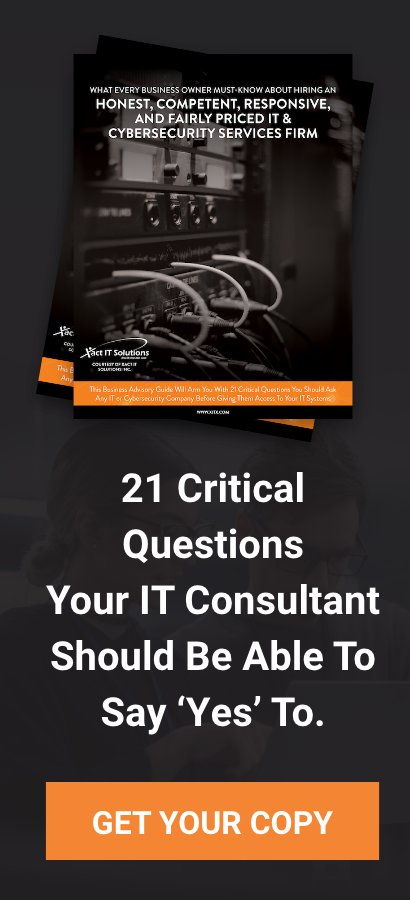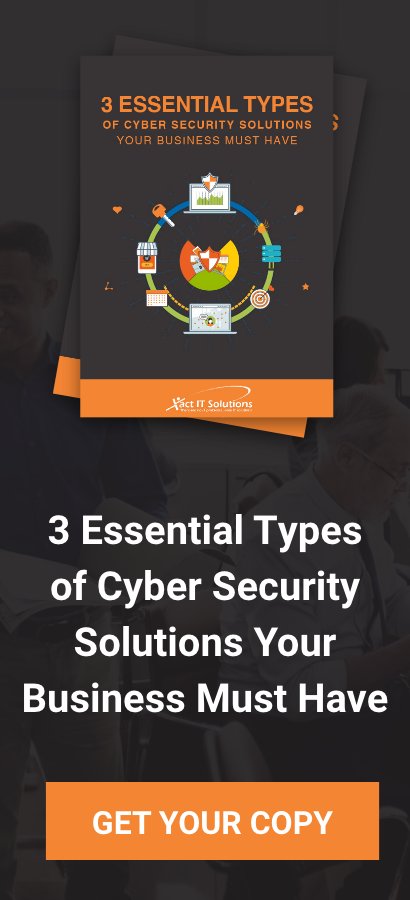This year brought extraordinary advances in technology. Appliances are getting smarter, and a wide array of software is available to make running a business faster and more efficient. These ten technology gifts are perfect for the entrepreneur in your life.
Prepping For 2018: What Should Be in My IT Budget?
Most small business owners are well aware that basic security measures are a must in today’s digital economy. Antivirus software and firewalls should already be in place to protect against data theft and malware. However, the growing value of digital assets has prompted cybercriminals to innovate, and small business owners must stay a step ahead of them to keep critical information and equipment secure.
Fall 2017 Cybersecurity Landscape
Cybersecurity is a hot topic this year, especially since barely a week goes by without news of another major breach. While the most publicized are those that impact large organizations and millions of consumers, small and medium-sized businesses (SMBs) are actually at greater risk.
Top 3 Signs You Need Managed IT Services
The use of technology in business is no longer optional. Technology is integral to producing goods and services, and it is used for controlling workflow and measuring key performance indicators. Consumers expect the companies they do business with to have a strong internet and social media presence.
Fake Adobe Flash Player Alert Installs Ransomware – Bad Rabbit
The malware is still undetected by the majority of anti-virus programs, according to the analysis by virus checking site Virus Total.
The malware was distributed via a bogus Adobe Flash update.
The outbreak bears similarities to the WannaCry and Petya ransomware outbreaks that spread around the world causing widespread disruption earlier this year.
Natural Disasters – 5 Thing To Do To Keeping Your Business Going
Another Hurricane has it's sights set on the U.S. mainland once again. As the remnants of Hurricane Harvey finally passed this weekend, forecasters began to once again sound the alarm bells around Hurricane Irma. As of this writing, Hurricane Irma was the strongest hurricane ever recorded in the Atlantic and was at a Category 5 with 185 MPH sustained winds.
Is Your Data Safe?
Whether it's a physical disaster like flood or fire, or a data disaster like a failed hard drive or data breach, the surest thing companies can plan for is that at some point, their business will be put to the test in a disaster recovery scenario. In the case of physical disaster, having an insurance policy will provide coverage of their furnishings, but what is protecting the company's digital assets?
Backup Isn't Enough
The simplest solution that most companies have in place is to simply backup the data, but it isn't as simple as it seems.
Stop Ransomware Attacks Before They Happen
Chances are you've heard plenty about the dangers of viruses and malware--malicious programs that can be used to infect your computer, steal information or destroy files. And it's more than likely that you have some sort of virus protection software installed on your computer (if you don't, you really, really should!). But is your virus protection capable of stopping ransomware?
What Is Ransomware?
Ransomware is a particularly nasty piece of code that hackers can use to infect your computer, and then literally hold your files for ransom.
3 Signs That You Need to Outsource Your IT
IT is a critical part of any business and requires special skills to administer and ensure that investments are made in line with the business vision. While it is tempting for owners to wear multiple hats, IT isn't an area that runs well with minimal attention.
Microsoft Excel Tips and Tricks
Some people may think of Microsoft Excel as a very basic spreadsheet program. To the contrary, it's almost unimaginably complex. The pointers below represent just a few of the ways you could start using Excel in a more convenient, time-efficient manner.


